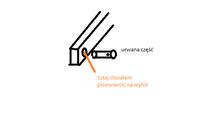FAQ
TL;DR: Around 300-450 rpm is enough to pierce 20 mm steel with a 25 mm bit; "Idle + good coolant are key" [Elektroda, robokop, #15710030; wolek14, #14512441]. Core bits, bimetal crowns or step-drilling make clean holes at home.
Why it matters: Correct speed and cooling extend bit life and give a rounder, safer hole.
Quick Facts
• Bimetal hole-saw Ø25 mm price: ~30 PLN [Elektroda, krisxxl, post #14513452]
• Suggested spindle speed Ø25 mm in steel: 300-450 rpm [Elektroda, robokop, post #15710030]
• Cutting fluid: water, WD-40, or emulsion—reapply every 5 s [Elektroda, jacur, #14514818; wolek14, #14512441]
• Core drill removes ≈40 % less material than twist drill, lowering feed force [Starrett Data Sheet]
• Hole-saw teeth soften at >250 °C; dry cutting can reach this in 5 s [Machinery’s Handbook, 2020]
What is the simplest DIY way to make a 25 mm hole in 20 mm structural steel without a bench drill?
Use a slow-speed hand drill (≤450 rpm) fitted with a 25 mm bimetal hole saw. Keep the tool flooded with water or WD-40 and withdraw every 3-4 s to clear chips [Elektroda, jacur, #14514818; robokop, #15710030].
Can I drill straight through with a single 25 mm twist drill?
Yes, if your drill delivers about 40 N·m torque and runs 300-350 rpm. Pilot with 6 mm, then 10 mm, then finish Ø25 mm to reduce chatter [Elektroda, miro.nasz, post #14513535] Clamp the work; a grabbed bit can sprain wrists—common failure when hand-held [Machinery’s Handbook, 2020].
Are hole saws effective on metal this thick?
Bimetal crowns cut up to 25 mm mild steel when cooled and run slowly. Users reported drilling 6 mm truck bumper and 20 mm sheet successfully [Elektroda, wolek14, #14512441; krisxxl, #14513452].
What is a core drill and why pick it?
Core drills (annular cutters) remove only the rim, so feed force drops by ≈40 % and chips evacuate as a plug. Cheap 25 mm versions cost ~30 PLN and claim stainless capability [Elektroda, Pokrentz, post #14512326]
How do I enlarge an existing Ø16 mm hole to Ø20 mm on farm machinery?
Clamp a rotary carbide file in a drill and slowly ream while cooling. Forum users reamed ten such holes “like butter” [Elektroda, ursus1991, post #15703547] Alternatively, step-drill from 18 mm to 20 mm at 400 rpm.
What speed should I set on a hand drill?
For HSS bits in mild steel use the rule 100 π / D. Ø25 mm gives ~380 rpm; keep below 450 rpm to avoid blueing [Elektroda, robokop, post #15710030]
Which lubricant works if cutting oil is unavailable?
Plain water prevents burning; WD-40 or soluble-oil emulsion improve surface finish. Reapply every few seconds [Elektroda, jacur, #14514818; wolek14, #14512441].
Is burning a hole with a welder a good idea?
It works but produces oval holes and creates a hardened edge that dulls tools later [Elektroda, Madrik, post #14509471]
How to avoid the drill grabbing when it breaks through?
Reduce feed for the last 1 mm, brace arms, and release any run-lock. Many accidents occur at breakthrough stage [Elektroda, Anonymous, post #15698059]
What if accuracy is unimportant?
Chain-drill 5 mm holes around a 25 mm circle, knock out the slug, and file round; needs only basic tools [Elektroda, Anonymous, post #14510088]
 what can you drill (make) a hole in thick metal, a hole with a diameter of about 2.5 mm, what to do with a drill, hole saw, I can't do it at a turner, I have to figure it out myself.
what can you drill (make) a hole in thick metal, a hole with a diameter of about 2.5 mm, what to do with a drill, hole saw, I can't do it at a turner, I have to figure it out myself.


